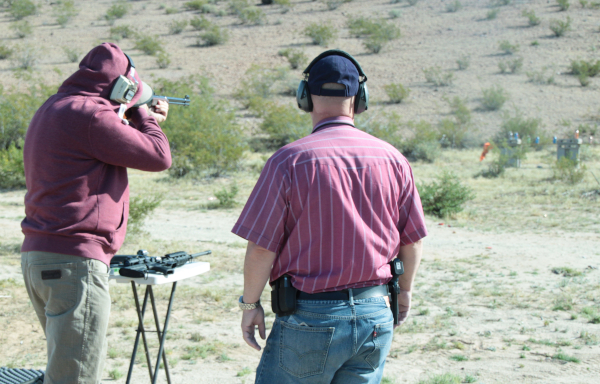Part III - It's still about safety
There is a lot more about safety than just hitting the right target and not hitting the wrong one.
In this new installment we will take a look at the material aspects of properly managing your gun.
In the previous newsletter we looked at the four universal rules of gun safety.
Let's explore four more elements that will keep you safe and ensure your favorite firearm keeps on working when you most need it.
Know your gun
A firearm, especially a semi-auto, can be somewhat complex for the uninitiated.
You need to know and understand how it works in order to operate it safely.
There are two reliable sources that are available to you, make sure you use either one- or better both - to your advantage.
The User Manual
It will cover in detail all the features of your gun:
- how to load and safely unload it
- safeties, manual and automatic
- disassembly and cleaning
- and generally everything you need to be safe and efficient
The Expert
Your gun dealer, gunsmith or trainer will be able to get you on track
We strongly recommend that you seek professional training.
Stay tuned on this channel for training opportunities coming soon.
Make sure it fits you
If your pistol is too big and heavy, or too small for your hands, you will be uncomfortable, even clumsy.
And clumsiness is dangerous when dealing with firearms.
Too small a gun shooting a powerful round will quickly become uncomfortable, make you flinch and increase the risk of a mistake.
Revisit our article on buying your first gun, and ask for professional help to guide you in your choice.
Get the proper ammunition
Not all ammunition is created equal.
The "Plus"
Let's say your brand-new revolver is marked "38 Spl". You will naturally look on the shelves for a box of ammunition for the same caliber.
So far so good. But then you notice the label bears the mark "+P" or "+P+". What could that mean?
Some manufacturers will make cartridges developing higher pressures, for more power, in the same caliber.
That sounds like a good thing, BUT your particular gun must be designed to withstand those higher pressures.
If it is not, you run a big risk of seeing it blow up in your face or hurt an innocent bystander.
The user manual is again your fist stop. It will tell you the whole story.
The Fake Twins
This is less common but similar. Some calibers may have the same external dimensions but be of a different design.
For example you inherit an old Glisenti Pistol Mod. 1910 or a Bergmann–Bayard Model 1903.
At first glance, you would think you could use respectively 9mm Luger or .38 super ammunition in those pistols.
The cartridges look nearly identical to the 9mm Glisenti or 9mm Largo that should be used, and would surely fit in the gun.
However, they are modern rounds made to much higher pressures than those antique pistols were designed for. A blowup is very likely to occur.
This time again, make sure you use the ammunition properly labeled for your gun and ask for help if you are unsure.
The Recycling
Reloading ammunition is fun and can save money in the long run. It is also an activity that requires precision and concentration. Mistakes can lead to overloaded rounds and risks of accidents.
If you want to reload yourself learn from a reputable source. If somebody reloads for you, do they have a good reputation, and do you trust them?
In all the cases above, it is easy to avoid any of those dangerous situations, but you must pay attention and when in doubt, ask for help.
Dont't skip maintenance
A well cared-for gun is much safer than a neglected one.
By now, you should have learned all about the maintenance steps recommended by the manufacturer for your particular firearm.
We strongly suggest cleaning the gun after each shooting session.
But also, if you carry a lot and shoot little, go through a cleaning once a month. A carried gun will gather lint, dust and generally all sorts of grime.
Before cleaning your gun, there are two major safety rules that you need to follow:
- Make ABSOLUTELY sure the gun is completely unloaded before anything else
- Remove ALL ammunition from the area. That means put it in another room
A good idea would be to wear some form of safety glasses as springs can sometimes have a mind of their own.
An added benefit of regular maintenance is that you will de facto be inspecting your firearm every so often.
This will increase dramatically the chances you will catch any anomaly like a broken part, abnormal wear, signs of overpressure (see “Get the proper ammunition”) or improper handling.
And remember, if you need instruction or help with maintenance, contact us and we will be there for you.
You may also once in a while ask us to perform a more in-depth cleaning an inspection.
Now you have bought your first gun, and you know the basic and more advanced safety rules.
In a future article, we will talk about everyday precautions for gun owners.



